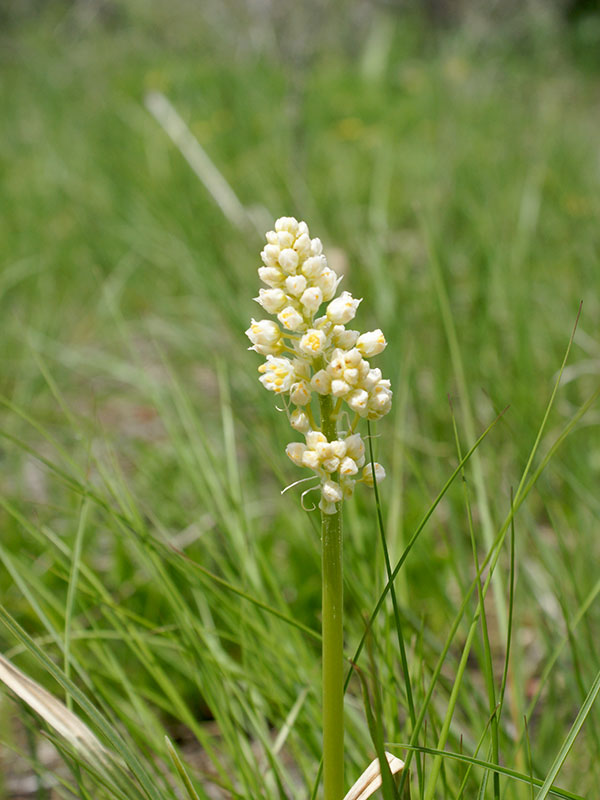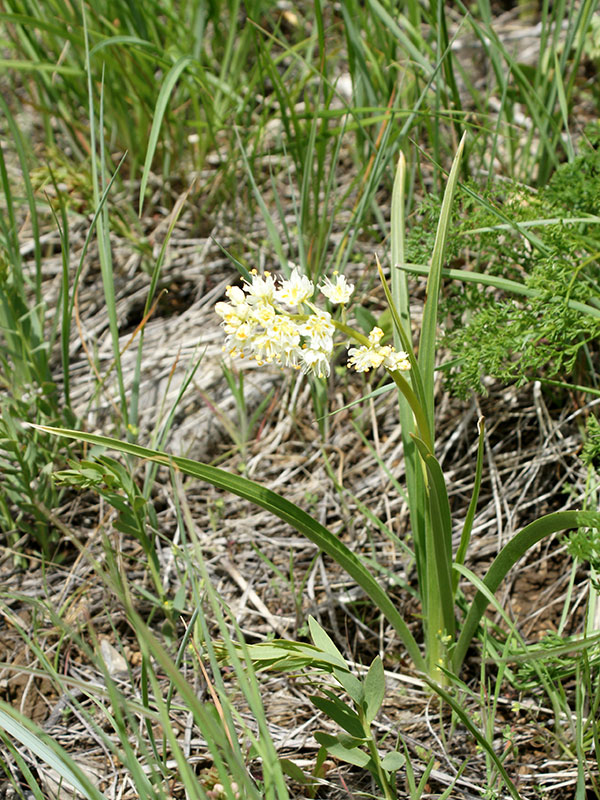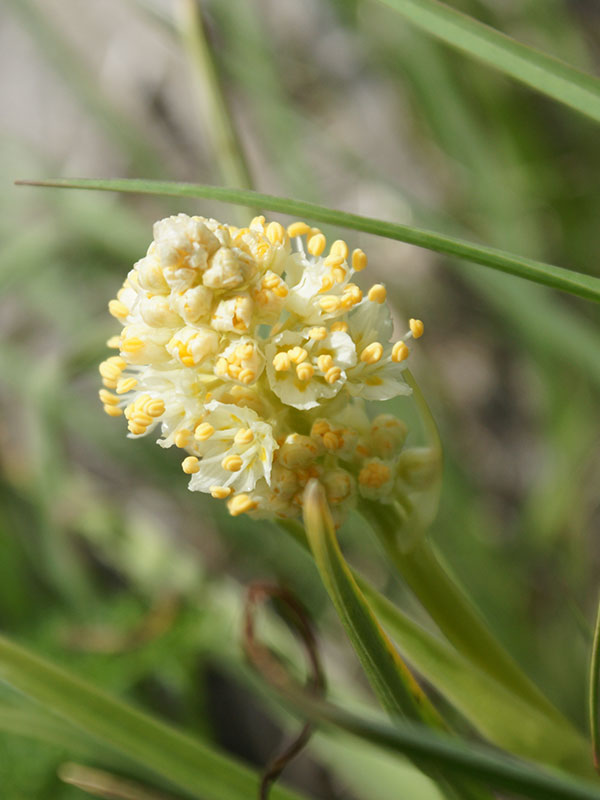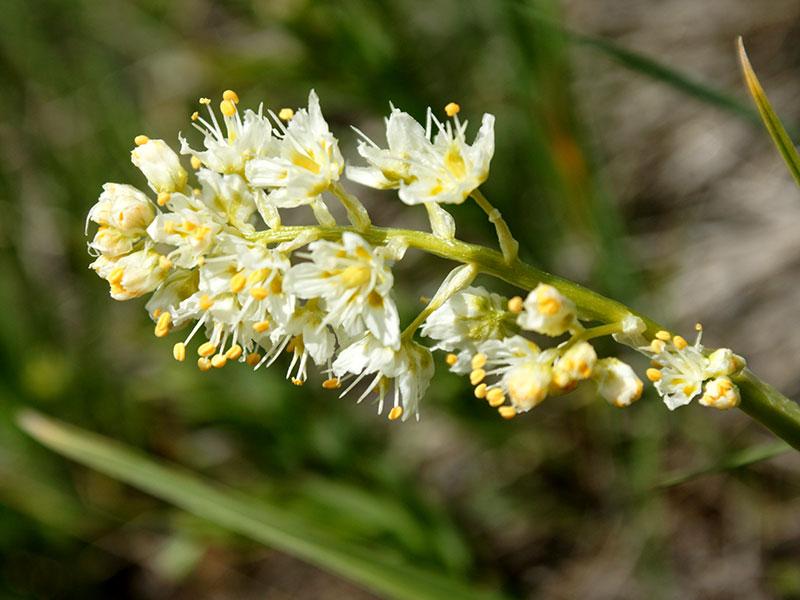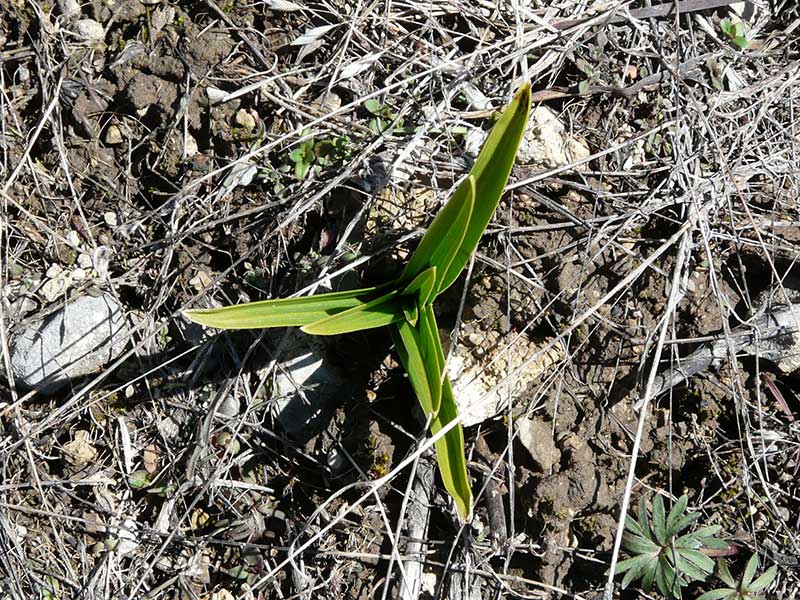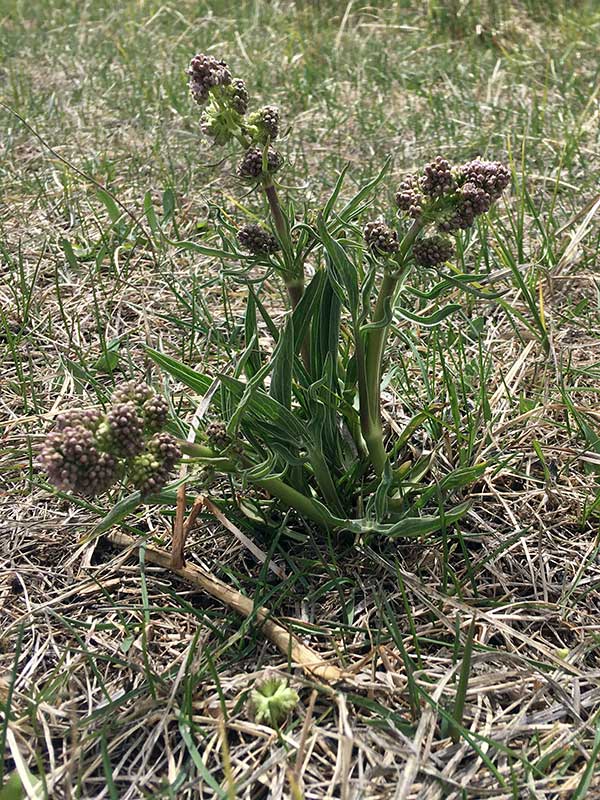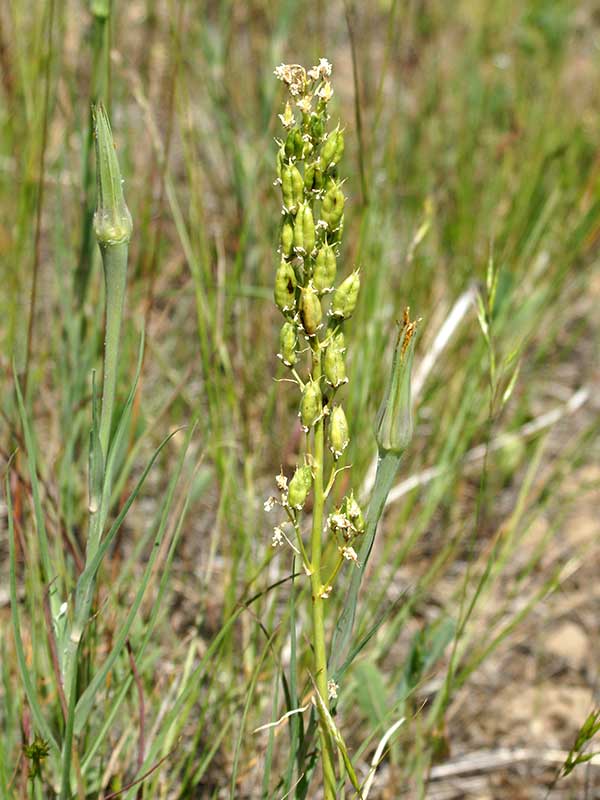Toxicoscordion venenosum / meadow death camas
- cream to greenish-white flowers – somewhat triangular overall
- branched flowering stem with multiple flowers in a compact pyramidal head
- 6 tepals (petals + sepals), greenish-yellow nectar glands
- grass/lily-like leaves
- blooms early in the season
Also known as: death camas
Synonym: Zigadenus venenosus
See also: Anticlea elegans /mountain death camas
The meadow death camas is a noticeable and attractive flower that blooms early in the season. It has cream colored to bright white flowers displaying as 6 tepals, each with a yellow-green nectar gland near the base. The petals and sepals in this species appear to be of different sizes, making the overall flower appear more triangular than hexagonal.
Having said that, and knowing that I can identify this plant from 50 yards, I can’t really think of how someone who has NOT seen it before would describe it, especially if they haven’t looked at the leaves. The inflorescence is sort of like an upside down ice cream cone of a nondescript flavor, perhaps cheap French vanilla. The leaves help… they are “grass-like” and up to a foot long and there are several of them. Would that do it? It always looks like it is not quite in full bloom.
The T. venenosum inflorescence contains between 10 and 50 flowers, and is triangular or pyramidal in shape (growing in pointed clusters) due to the fact that the individual flowers open from the bottom to the top. If you have a choice between calling this “meadow” or “mountain” death camas, the head in this case is more compact than the mountain death camas. The notched projections at the tip of the tepals are a putative distinguishing characteristic of the “mountain” species, but I find it hard to see the difference. To me, the flowers have a very appealing scent.
T. venenosum is a perennial cool season plant that is dormant by early summer. It propagates by seeds and by bulb offsets. It has a single, erect, unbranched stem with few leaves. It is found in dry meadows, dry hillsides and sagebrush slopes. Rocky and sandy soils are its thing. It is fine with drought, but not with shade. Most of the time, you will see dispersed individuals, so even if there are a lot of plants in one area, they aren’t crowded together.
Like the various other camases, the meadow death camas has basal, grass-like leaves. They begin to appear quite early in the season although it takes a few more weeks for the flowers to show up. The bulbs look – but do not smell – like onions. Don’t eat them. All parts of the plants are poisonous and reportedly remain so for decades in storage (how does one know that?). In fact, they are so poisonous that there appears to be only one specialist bee, Andrena astragali, that can pollinate it.
| Color | |
|---|---|
| Family | |
| Blossom size | |
| Inflorescence size | |
| Inflorescence type | |
| When? | |
| Where? |
